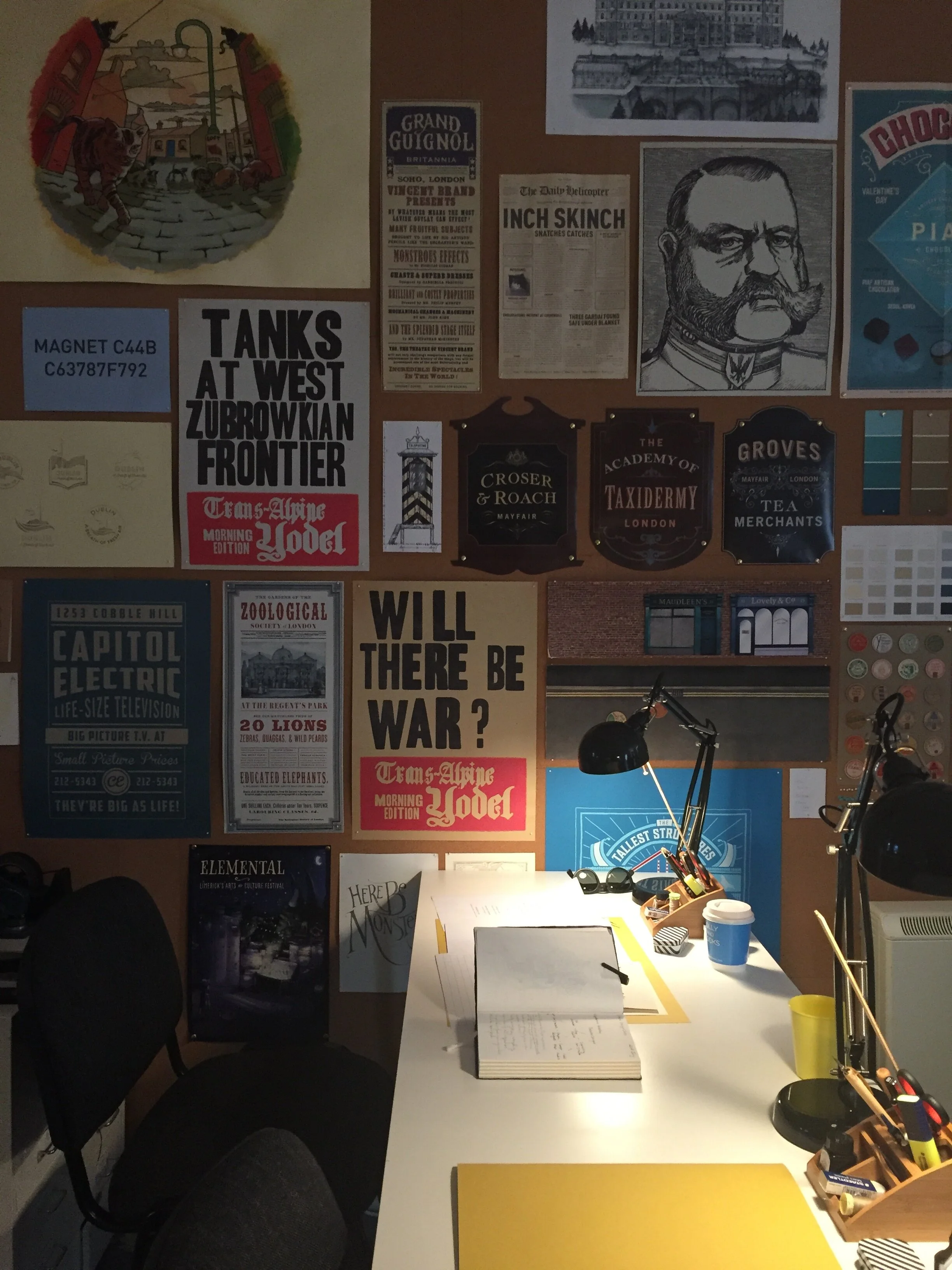Design as Storytelling.
Lessons from Annie Atkins
A few years ago, I packed my pencil case, flew to Dublin, and spent a weekend immersed in the captivating world of Annie Atkins. In her basement studio, brimming with creative energy, we worked on crafting film props, uncovering the art of using graphic design to tell stories so seamlessly that they feel like a natural extension of their world.
Annie Atkins is more than a designer—she’s a storyteller. Her work for films like The Box Trolls, Steven Spielberg’s Bridge of Spies, and Wes Anderson’s The Grand Budapest Hotel transforms the everyday ephemera of letters, passports, and signage into objects that enrich cinematic narratives. Each piece is painstakingly crafted to blend into the set's fabric, creating layers of authenticity and intrigue that immerse the viewer in an imagined reality.
What sets Annie’s work apart is how it balances detail with intention. Every graphic element she designs—a postage stamp or a prison escape map—serves a narrative purpose. It might reveal something about a character, reflect the historical context of a scene, or add texture to the story’s world. For example, in The Grand Budapest Hotel, a handmade newspaper isn’t just a prop; it becomes a piece of history within the film, carrying the weight of its fictional world.
This approach highlights how storytelling can infuse even the most functional design with meaning. Annie’s props aren’t there to be noticed but to be felt. They weave seamlessly into the visual narrative, grounding the viewer in a world that feels real, even when it’s entirely imagined.
Her process also emphasizes the value of craftsmanship. From hand-lettering to ageing paper, she treats every detail as an opportunity to add depth to the story. It’s a philosophy that resonates far beyond film design, offering a blueprint for how to approach any creative project. The key is to consider the narrative at every stage—what story is being told, and how can design amplify its impact?
Inspired by designers like Annie, I’ve seen the potential in even the most mundane elements of a project. Whether it’s a menu for a small café or packaging for a product, every detail can carry a story that connects and captivates.
In this journal series, I’ll share insights into weaving storytelling into design—crafting pieces that do more than look good; they resonate, enrich, and transport. After all, the best design doesn’t just serve a function—it tells a story.

